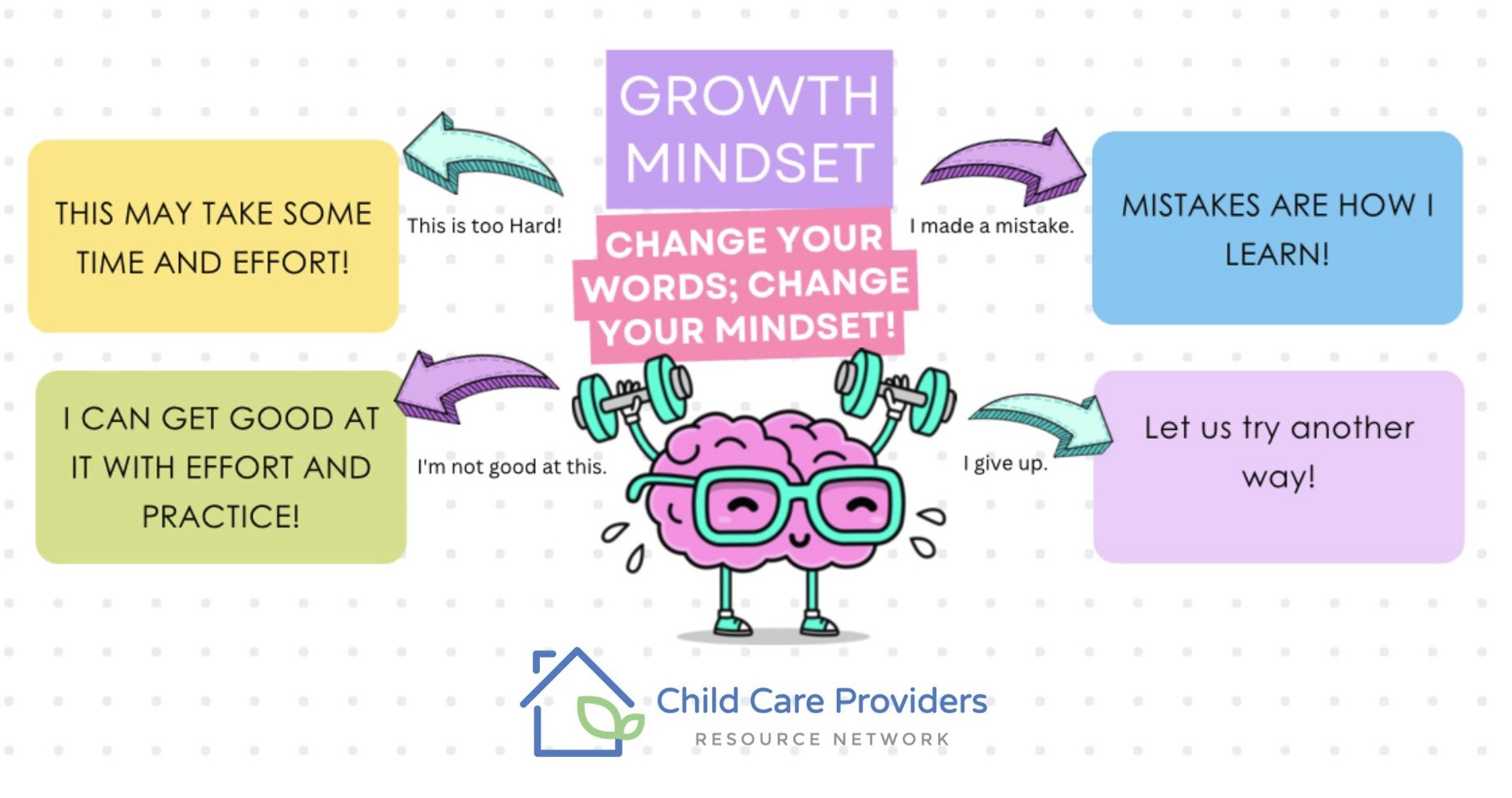Empowering Growth: Nurturing a Growth Mindset in Children
Written by Krystal Kirkwood, RECE
As parents and caregivers, we want to see our children thrive and reach their full potential. One important factor in their success is their mindset. In this blog post, we’ll explore the differences between a growth mindset and a fixed mindset and share simple ways to nurture a growth mindset in the children you care for.

Understanding Growth Mindset:
With a growth mindset we can embrace challenges and learn from mistakes. A growth mindset is when children believe they can improve their abilities through practice and effort. They see challenges as opportunities to grow and learn. They understand that that it’s ok to make mistakes and can learn from them.
Exploring Fixed Mindset:
With a fixed mindset we are stuck in limitations and fear of failure. A fixed mindset is when children believe their abilities are fixed traits. They may avoid challenges because they fear failure and believe that making mistakes means they’re not smart or talented enough.

Fostering a Growth Mindset in Children:
- Encouraging Effort and Progress: Focus on praising the child’s efforts and the progress they make, rather than their achievements. E.g., “Wow that was really hard for you, but you kept trying, you did it!” This will teach them that hard work and perseverance are more important than success.
- Teach the power of “yet”: When your child says, “I can’t do that!” add the word “yet” to the end. This simple word encourages them to believe in their ability to learn.
- Emphasize the learning process: Help the children in your care to understand that learning is a journey. Encourage curiosity, exploration, and a love for learning new things. Show them that mistakes are opportunities to learn and improve.
- Set realistic goals: Help the children set achievable goals that require effort and progress. Break bigger goals into smaller steps and celebrate their accomplishments. E.g., The child who is learning to zip up their zipper independently. You can start the zipper for them, but don’t zip it up all the way, allow the child to do this. Then say, “YOU DID IT!” with excitement. This will build their confidence and motivation.
- Be a role model: Children learn by observing their parents and caregivers. Model a growth mindset by sharing stories of your own challenges and how you overcame them. Show them that setbacks are temporary and how “sticking with it” leads to growth.
- Provide support an encouragement: offer kind guidance and support when your child faces difficulties. Encourage them to try different strategies and provide positive reinforcements for their efforts, regardless of the outcome.
By nurturing a growth mindset in children, we empower them to approach challenges with resilience, and foster a love for lifelong learning. Encourage effort, teach the power of “yet”, emphasize the learning process, set realistic goals, be a role model, and provide support. With your positive guidance and belief in their ability to learn, the children in your care will develop a mindset that opens doors to endless possibilities.
